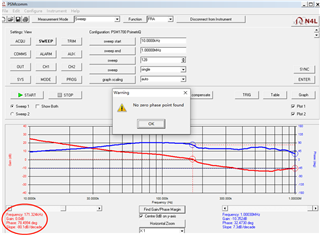Hi
I use TPS53681+3*CSD95490 supply power 0.9V/100A,Fsw=500KHz,test loop stability,find 0-dB frequency (f0=155KHz) is too high,
I'm trying to debug AC_GAIN to decrease and AC_LL to increase it worked.
so,How do you recommend debugging?


shaocong
thanks

